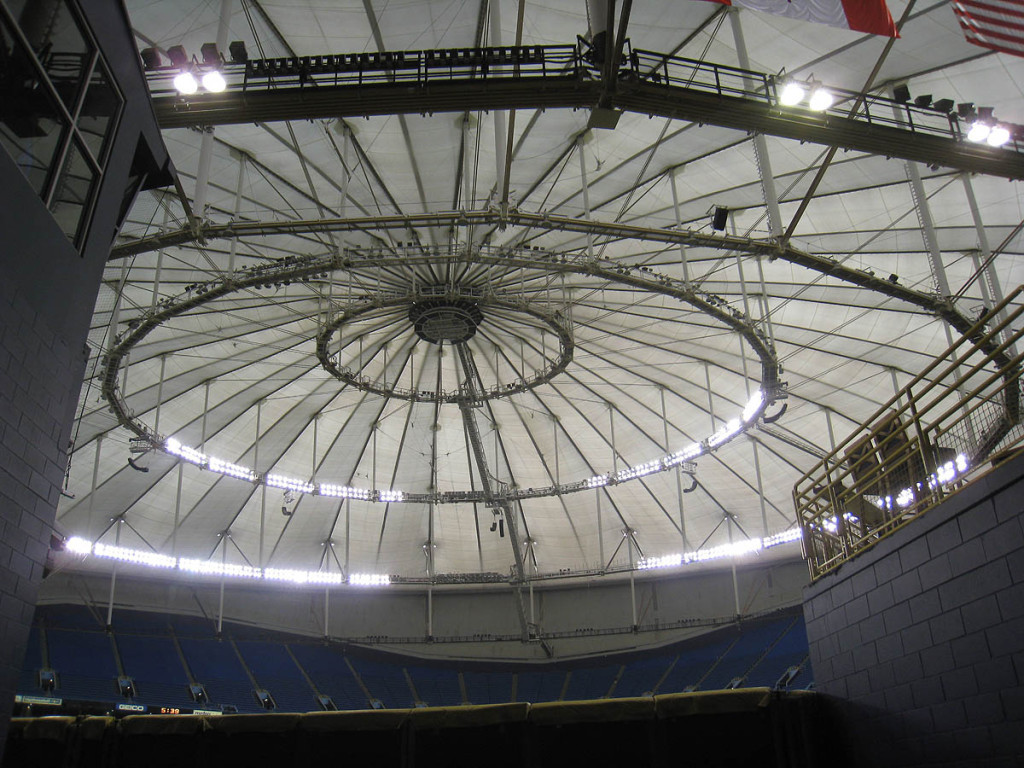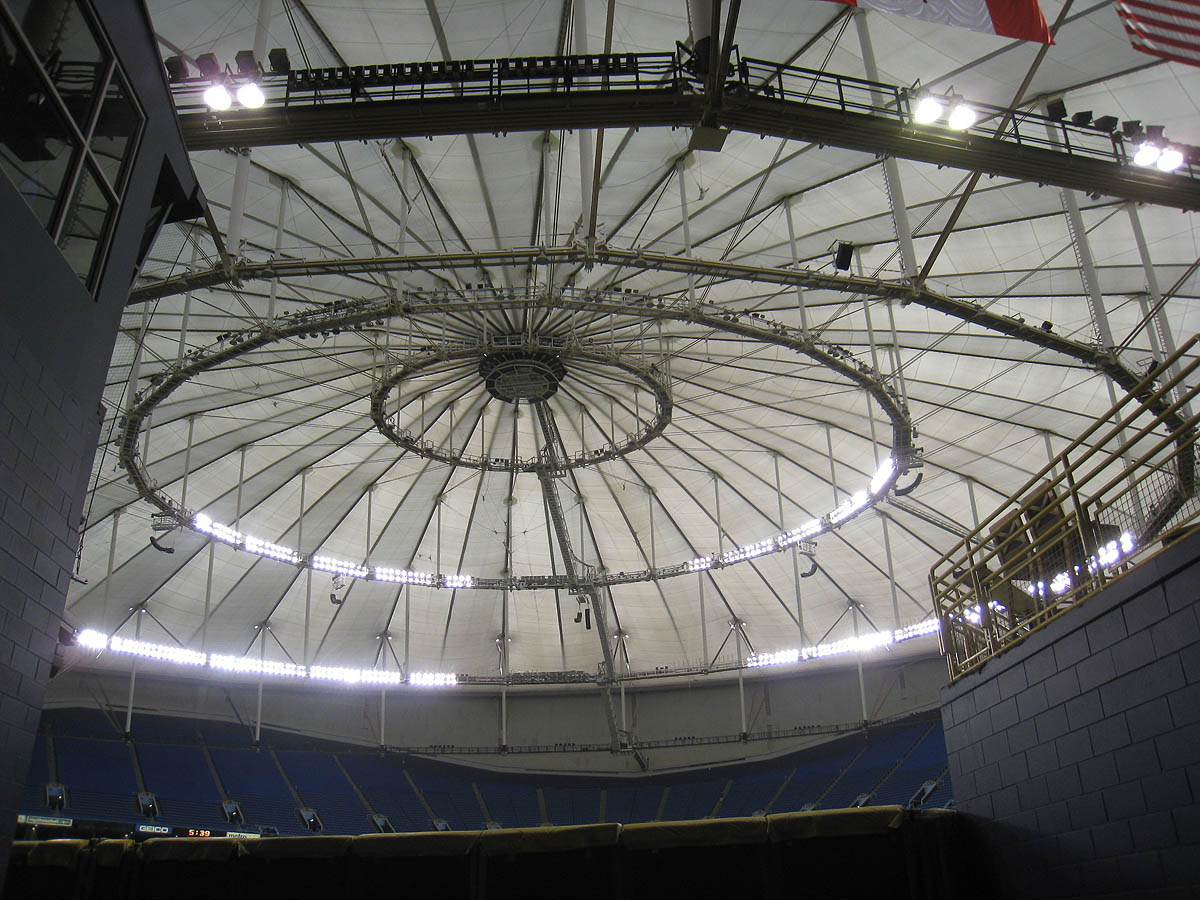
We’re really looking to tear up the old model, Rays President Brian Auld said.
While the specifics depend primarily on location, the Rays are looking to design their next home from scratch. Auld acknowledged that a new facility will likely be smaller, with different types of seats in a different configuration. It might also have a retractable roof, or it could boast a fixed translucent roof that allows natural sunlight to filter onto a natural playing surface.
The Rays conception of a new stadium is more than just a place to play a game:
We could see hosting Little League baseball tournaments, lacrosse tournaments, Auld said. I like the idea of just opening up the outfield walls and inviting the public in during the winter and just letting it be the coolest park in America. Those things are all on the table. We’re trying to figure out ways to do it.
Both sides agreed to meet again, probably monthly. There is no word on when the team will meet with Pinellas County officials and business leaders.
The meeting happened a day after the Rays outlined their their criteria for evaluating potential stadium sites. As I wrote on Friday, that criteria includes:
- A catalyst for development: The ballpark site and surrounding area should offer now or in the future a wide range of entertainment, dining and retail amenities for the “come early, stay late” culture the Rays want.
- Local authenticity: “It should be a celebration of Tampa Bay and include iconic elements that positively impact the ballpark brand, the brand of the team and the image of the region.”
- Regional connectivity: In addition to being connected to existing and growing population centers and business district, the new ballpark should be close to existing or future mass transit.
- Site accessibility: It should be easily accessible by road, and accommodate parking within walking distance of the stadium.
- Size and geometry: Twenty acres and with the geometry needed for a professional baseball playing surface.
- Financial feasibility and development readiness: The Rays say a public-private partnership is “critical.”
What is known, the team plans to spend a couple of months analyzing the regional business centers on both sides of the bay.
On that subject, Richard Danielson (Tampa Bay Times) wrote:
What the team learns about those submarkets will inform how big the ballpark is, what features it includes, how the seats are configured, what spaces it includes to create social interaction and other design features. The team wants a home field that boosts attendance, increases revenue and flips the balance of season ticket holders from the current mix of 70 percent individual and 30 percent business to the Major League Baseball standard, which is the opposite.
The elephant in the room, neither side discussed the topic of potential financing for the ballpark, which has the potential to cost anywhere from $400-million to $700-million.
The Rays’ dictated agenda avoided the subject altogether, with Melanie Lenz (the team’s Vice President) being quoted as saying:
It’s really hard to talk about financing a project that we don’t know what it’s going to look like and we don’t know where it’s going to be.
Ever the pragmatist, Tampa mayor Bob Buckhorn recognized something that holds true for citizens in both Hillsborough and Pinellas Counties, the Rays are going to have to come to the table with a significant amount of money:
I don’t know how much money ‘significant’ is, but I think it’s important that they be partners in this process. Taxpayers cannot bear the entire burden of a stadium.
The team agreed to spend at least six months evaluating sites so that St. Petersburg can make its case that their current home ― enhanced by future development ― is the Rays’ best long-term option.

